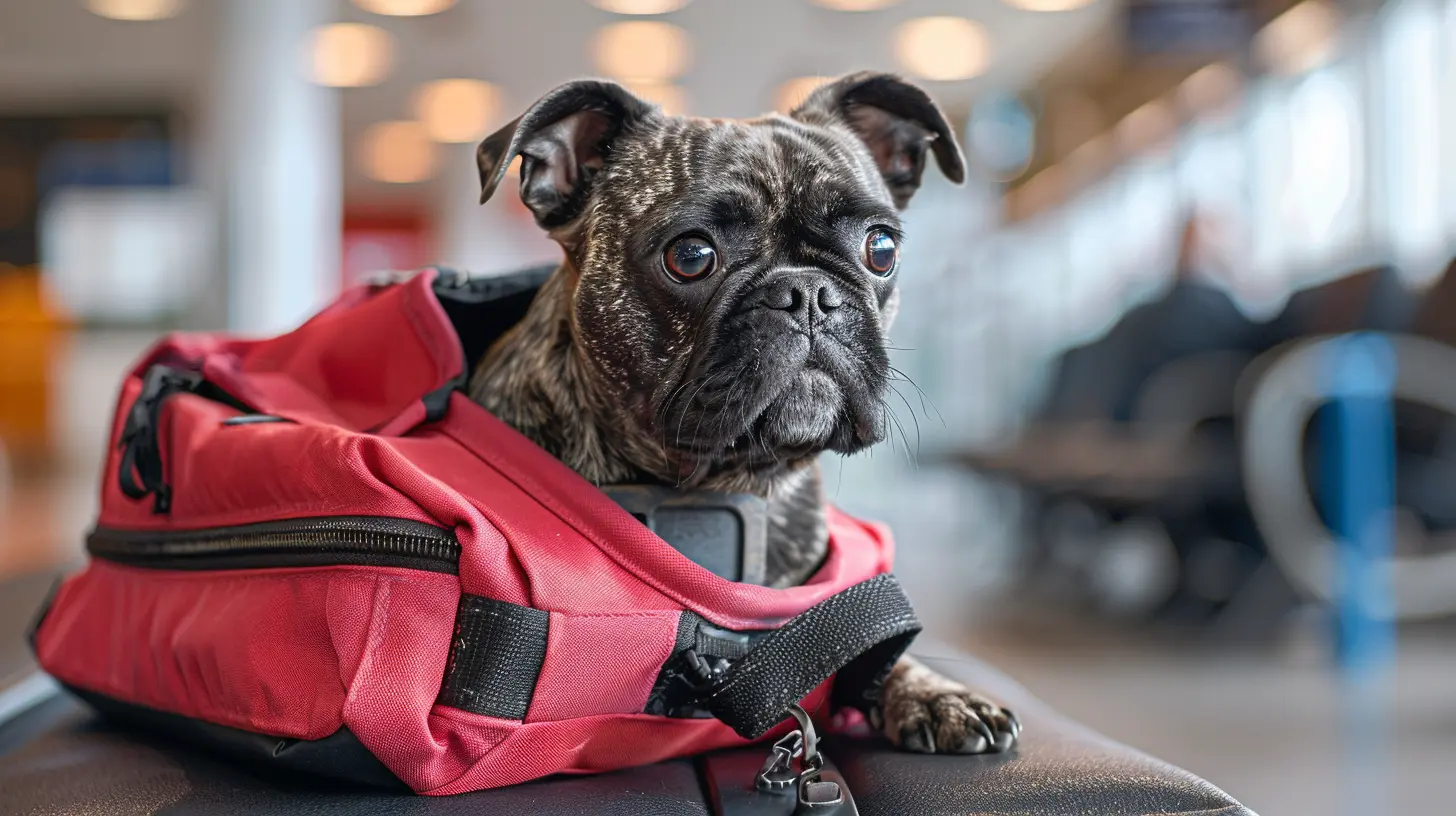Choosing the Right Pet Carrier for Air Travel
10 November 2025
Getting ready to take to the skies with your furry friend? That’s no small feat. Traveling with pets, especially by plane, means you’ve got to tick every box—from airline rules and comfort to safety and size requirements. And one of the most important decisions you’ll make? Choosing the right pet carrier for air travel.
Yep, the carrier you choose can make or break the entire experience—for both you and your pet. So let’s break it all down, one paw-step at a time.
Why the Right Pet Carrier Matters
Think about it: for the entire flight (plus airport time), your pet is going to be confined to this space. It’s their temporary home. If it’s too small, uncomfortable, or not airline-approved, it won’t just stress out your pet—it could cause you a load of problems too.Airlines are picky about pet carriers. And for good reason. Ensuring that pets are safe, secure, and able to breathe easily during flights is super important. Getting turned away at check-in because of the wrong carrier? Trust us, that’s a nightmare you don’t want.
Airline Rules: The First Thing You Need to Check
Before you even start browsing for a carrier, check your airline’s pet travel policy. Each airline has its own rules regarding dimensions, materials, and even the kind of animals allowed on board.Some carriers are designed for under-seat storage in the cabin, while others are meant for cargo hold travel. Make sure your chosen carrier fits the airline’s requirements to avoid last-minute surprises.
Common Carrier Guidelines by Airlines Include:
- Size Restrictions: Must fit under seat for in-cabin travel- Ventilation: At least two sides of mesh for airflow
- Leak-proof Bottoms: To avoid mid-flight messes
- Secure Closures: Zippers and locks that your pet can’t open

Types of Pet Carriers for Air Travel
Let’s get into the meat of it: What kind of pet carriers are out there? Not all are suited for air travel, so you need to know what’s what.1. Soft-Sided Carriers
These are the go-to for in-cabin travel. Think of them like the economy-class seats for pets—snug but fairly comfy.Best For: Small pets like cats and toy breeds
Pros:
- Lightweight and flexible
- Fits under airplane seats easily
- Often come with shoulder straps
Cons:
- Not suitable for large or aggressive pets
- Can get squished if overloaded
2. Hard-Sided Carriers
These are your sturdy options, best for pets flying in the cargo hold—or when you want extra protection.Best For: Larger dogs or pets that chew
Pros:
- Tough, durable material
- Offers solid protection
- Easy to clean
Cons:
- Heavier to carry
- May not fit under airline seats
3. Wheeled Carriers
Yes, pets on wheels exist. Perfect for those who don’t want to carry their weight—literally.Best For: Older pets, heavier loads
Pros:
- Easy maneuverability
- Great for walking long airport terminals
Cons:
- Not all are airline-compliant
- Some have limited ventilation
Size Matters: How to Measure Your Pet for a Carrier
Let’s get real. Just eyeballing your pet and saying, “Looks like a medium to me” isn’t going to cut it. You need accurate measurements to get it right.You’ll Need to Measure:
- Length: From snout to base of the tail- Height: From floor to top of head or ears (whichever is higher)
- Width: Across the broadest part of the body
Once you’ve got these, add about 2–3 inches to each measurement to ensure they can move, turn, and lie down comfortably.
> Pro Tip: Most airlines require the pet to be able to stand, turn around, and lie down naturally in the carrier.
Material and Build Quality
You wouldn’t want to fly in a rickety box, right? Same goes for your pet. A well-built carrier doesn’t just keep your animal safe—it also shows you care.Look For:
- Durable fabrics or plastics- Mesh panels for ventilation
- Reinforced zippers to prevent escapes
- Waterproof lining for those little accidents
Bonus points if it has:
- Pockets for treats, paperwork, or toys
- Removable mats for easy cleaning
- Padded straps for your comfort
Safety Features You Shouldn’t Compromise On
When it comes to flying at 35,000 feet, safety isn’t optional.Must-Have Safety Features:
- Lockable zippers or clasps- Secure collar/inside leash clips
- Escape-proof openings
- Stable bottom to prevent tipping
If your carrier feels like it could unravel halfway through your airport dash, it probably isn’t going to make it through TSA, let alone a bumpy flight.
Comfort: Keeping Your Pet Chill (Literally and Figuratively)
Comfort is key for less stress and fewer in-flight freak-outs. Even if your flight’s just a few hours, that time can feel like an eternity to your pet.Ways to Boost Comfort:
- Ventilation: Make sure there’s enough airflow- Soft bedding: Use a familiar blanket or mat
- Space to move: Cramped quarters = anxiety
- Quiet space: Carriers with covers or privacy panels can reduce stress
Cabin vs Cargo: Which Type of Travel Is Right?
In-Cabin Travel
This is the preferred method for smaller pets. They stay close to you, usually under the seat in front.Pros:
- You can monitor them
- Less stressful for the pet
- Fewer temperature fluctuations
Cons:
- Only for small pets (usually under 20 lbs)
- Limited carrier size
Cargo Hold
Larger pets don’t have much choice—they’ll need to go in the cargo hold. This sounds scary, but with a proper airline-approved hard carrier, it can be safe.Pros:
- Roomy carriers allowed
- Ideal for big dogs
Cons:
- Less control and visibility
- Temperature and pressure changes (make sure airline handles pet cargo well)
Do You Need an IATA-Approved Carrier?
If your pet is flying in the cargo hold, the answer is yes—absolutely. The International Air Transport Association (IATA) sets global standards for animal containers in air travel.IATA Guidelines Include:
- Strong, leak-proof construction- Ventilation on all sides
- Secure, non-slip flooring
- Handles for carrying
Your airline will likely refuse a cargo-bound pet if the carrier isn’t IATA-compliant.
Test Run: Always ‘Try Before You Fly’
Would you wear brand-new shoes on a marathon? No? Your pet feels the same way about new carriers.Get the carrier a few weeks before your trip and let your pet explore:
- Place treats or toys inside
- Let them nap in it at home
- Carry them around the neighborhood
This builds familiarity and reduces anxiety when the big travel day arrives.
Add-ons That Make a Big Difference
Sometimes, it's the little things that count. These extras can take your pet’s flying experience from “meh” to fabulous:- Cooling pads if you’re flying in summer
- Calming pheromone sprays to ease nerves
- ID tags and documents holder attached to the carrier
- Collapsible water bowls clipped onto the carrier for layovers
Travel Day Tips for a Smooth Ride
Okay, so your carrier is airline-approved, comfy, and stylish (why not?). Now let’s add some quick travel-day tips to the mix:- Feed your pet a light meal 4 hours before departure
- Attach ID tags on both pet and carrier
- Carry extra pee pads, wipes, and baggies—just in case
- Arrive early to get through pet check-in smoothly
- Carry vet records and clearance if needed
Final Thoughts
Choosing the right pet carrier for air travel isn’t just a shopping decision—it’s a travel investment. You’re not only thinking about airline compliance but your pet’s safety, comfort, and state of mind. It’s your job to make this experience as smooth as possible for your four-legged buddy.Yes, there’s a lot to consider. But once you’ve found “the one,” the payoff is huge—a stress-free flight, a happy pet, and a bunch of tail wags at your final destination. So do your homework, test it out, and travel safe.
Whether it’s Paris, New York, or just Grandma’s house, the right pet carrier makes all the difference.
all images in this post were generated using AI tools
Category:
Pet Friendly TravelAuthor:

Shane Monroe
Discussion
rate this article
1 comments
Carly Roth
Choosing the right pet carrier for air travel is crucial. Prioritize comfort, size regulations, and safety features to ensure your furry friend has a pleasant journey. Happy travels!
November 13, 2025 at 5:24 PM

